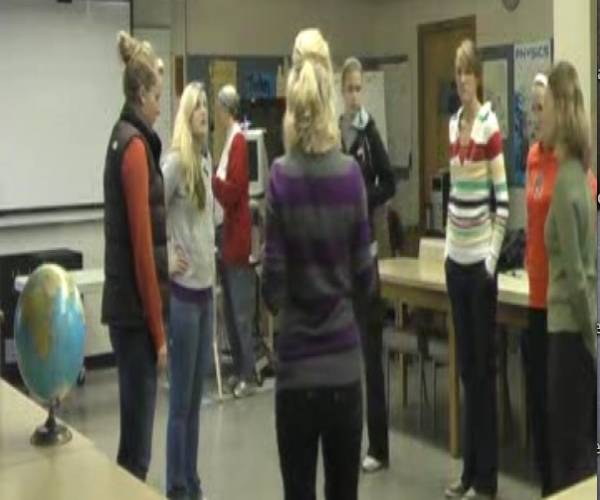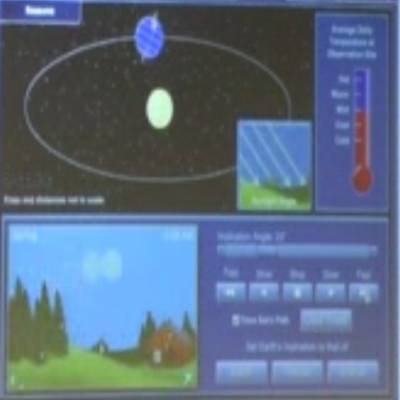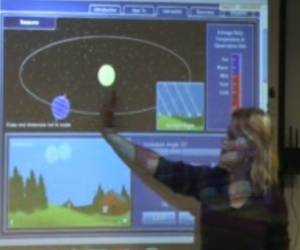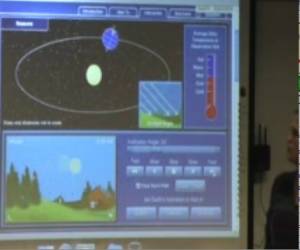You are here: start » days » fall2009daybyday » fall2009day19 » seasonsdance
Seasons Dance
Navigation Links
Accessing Students Prior Knowledge
We started off class by going into a different room down the hall. Michele did a fun activity to help the students understand why we have different seasons on earth. She asked them what they knew about seasons or the earth and why it has seasons.
Michele: What do you know about the seasons?
Student 1: I know that they vary depending on the orbit of the earth. How near or far in the elliptical orbit…
Student 2: Doesn't it have something to do with the tilt of the earth?
A couple of students mentioned that we have seasons because of the earth's tilt. A couple of students also mentioned that we have seasons because we are farther away from the sun or closer to the sun. To figure out what ideas were correct, Michele had the students model the sun and the earth during different times of the year.
Creating a Model for Building Understanding
Michele: We don't go exactly in a circular orbit around the sun, so our position does change from time to time. We are tilted, which you can see on a globe. Can you all come gather here in a circle?
Michele: Let's pretend that the sun is in the middle of our circle, and we are all the earth.
Michele explained that the earth is always at a 23.5 degree tilt. The students used their bodies to demonstrate the earth's tilt. They moved around the sun (someone standing in the middle of the room) while both rotating and revolving.
Findings and Explanations
Michele showed the class a website after everyone had a concrete understanding. The website demonstrated the earth's tilt, the sun's rays and how direct they were, and how long it appears the sun is up each day. The students had fun wrapping their brains around these new concepts.
Through discussion and a lot of question asking, the students came up with a solid idea about why we experience seasons on earth. Depending on the earth's tilt, some parts of the earth are receiving more direct sunlight for longer periods of time than other parts of the earth. As the earth revolves around the sun, the axis remains the same. Therefore, the parts of earth that were getting a lot of direct sunlight during one season, are now getting very little during an opposing season.



